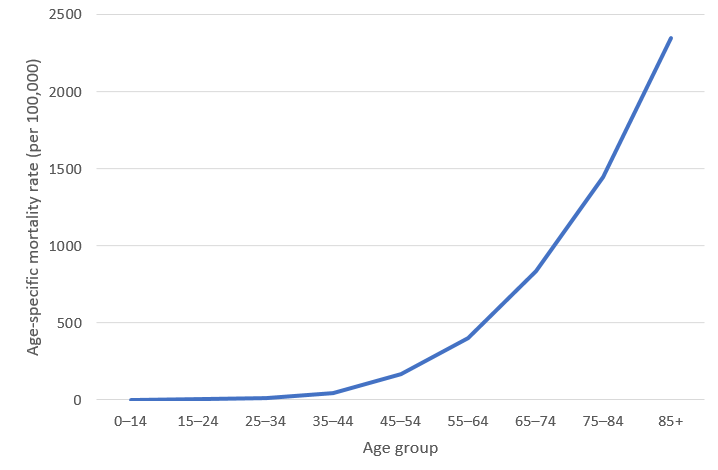- Home
- Aboriginal and Torres Strait Islander cancer statistics
Aboriginal and Torres Strait Islander cancer statistics
The following material has been sourced from the Australian Institute of Health and Welfare
The following information incorporates the most up-to-date data available to describe the incidence, mortality, survival and prevalence of cancer in Aboriginal and Torres Strait Islander people. The ICD-10 cancer codes associated with ‘All cancers combined’ and individual cancer types can be found on their respective pages.
Number of new cancer cases diagnosed among Aboriginal and Torres Strait Islander people, 2012–2016
8,326 =  4,134 males +
4,134 males +  4,192 females
4,192 females
Number of deaths from cancer among Aboriginal and Torres Strait Islander people, 2015–2019
3,576 =  1,939 males +
1,939 males +  1,637 females
1,637 females
Chance of surviving at least 5 years (2012–2016)
 54%
54%
Aboriginal and Torres Strait Islander people living with cancer at the end of 2015 (diagnosed in the 5-year period 2011 to 2015)
 4,035
4,035
New cases of cancer in Aboriginal and Torres Strait Islander people
Between 2012 and 2016, there were 8,326 new cases of cancer diagnosed in Aboriginal and Torres Strait Islander people (4,134 cases for males and 4,192 cases for females) in New South Wales, Victoria, Queensland, Western Australia and the Northern Territory.
In this period, lung cancer was the most commonly diagnosed cancer in Aboriginal and Torres Strait Islander people, followed by breast cancer, colorectal cancer, prostate cancer, and head and neck (including lip) cancer.

Figure 1. Most common cancers diagnosed in Aboriginal and Torres Strait Islander people, 2012–2016
Note: Data sourced from AIHW Australian Cancer Database 2016
Between 2012 and 2016, the age-standardised incidence rate of all cancers combined for Aboriginal and Torres Strait Islander people was 523 cases per 100,000 persons (602 for males and 467 for females). Between 2011 and 2015, the age-specific incidence rate for all cancers combined increased with age.

Figure 2. Age-specific incidence rates of all cancers combined in Aboriginal and Torres Strait Islander people, by age group, 2011–2015
Note: Data sourced from AIHW Australian Cancer Database 2016
Deaths from cancer among Aboriginal and Torres Strait Islander people
Between 2015 and 2019, 3,576 Aboriginal and Torres Strait Islander people died from cancer (1,939 males and 1,637 females) in New South Wales, Queensland, Western Australia, South Australia and the Northern Territory.
Between 2015 and 2019, lung cancer was the leading cause of cancer death among Aboriginal and Torres Strait Islander people, followed by colorectal cancer, liver cancer, pancreatic cancer and cancer of unknown primary site.

Figure 3. Most common causes of cancer death among Aboriginal and Torres Strait Islander people, 2015–2019
Note: Data sourced from AIHW National Mortality Database
Between 2015 and 2019, the age-standardised mortality rate among Aboriginal and Torres Strait Islander people was 230 deaths per 100,000 persons (276 for males and 194 for females).
Between 2014 and 2018, the age-specific mortality rate for all cancers combined increased with age.

Figure 4. Age-specific mortality rates of all cancers combined in Aboriginal and Torres Strait Islander people, by age group, 2014–2018
Note: Data sourced from AIHW National Mortality Database
Survival
Between 2012 and 2016, Aboriginal and Torres Strait Islander people diagnosed with cancer had a 54% chance, on average, of surviving five years.
Prevalence
At the end of 2015, there were 4,035 Aboriginal and Torres Strait Islander people (1,881 males and 2,154 females) living who had been diagnosed with cancer in the previous five years.
For more information on cancer data for Aboriginal and Torres Strait Islander people, see the Aboriginal and Torres Strait Islander Cancer Control Indicators website
The Aboriginal and Torres Strait Islander Cancer Control Indicators are designed to monitor performance across the seven priority areas outlined in the National Aboriginal and Torres Strait Islander Cancer Framework and align with the Optimal Care Pathway for Aboriginal and Torres Strait Islander people with cancer. These Indicators are designed to lead to better care and improved outcomes for Aboriginal and Torres Strait Islander peoples with cancer.
The website provides Aboriginal and Torres Strait Islander cancer data in one location designed for use by policymakers, governments, cancer organisations, researchers, health professionals, and consumers. The data on the website will enhance understanding, stimulate enquiry and inform future directions in cancer control, whether in research, policy or clinical care. It will also be a trustworthy, authoritative source of information for the broader community and people affected by cancer.
References
- Australian Institute of Health and Welfare 2021. Cancer in Australia 2021. Cancer series no. 133. Cat. no. CAN 144. Canberra: AIHW
- Australian Institute of Health and Welfare (AIHW). Australian Cancer Database 2016.
- Australian Institute of Health and Welfare (AIHW). AIHW National Mortality Database.



